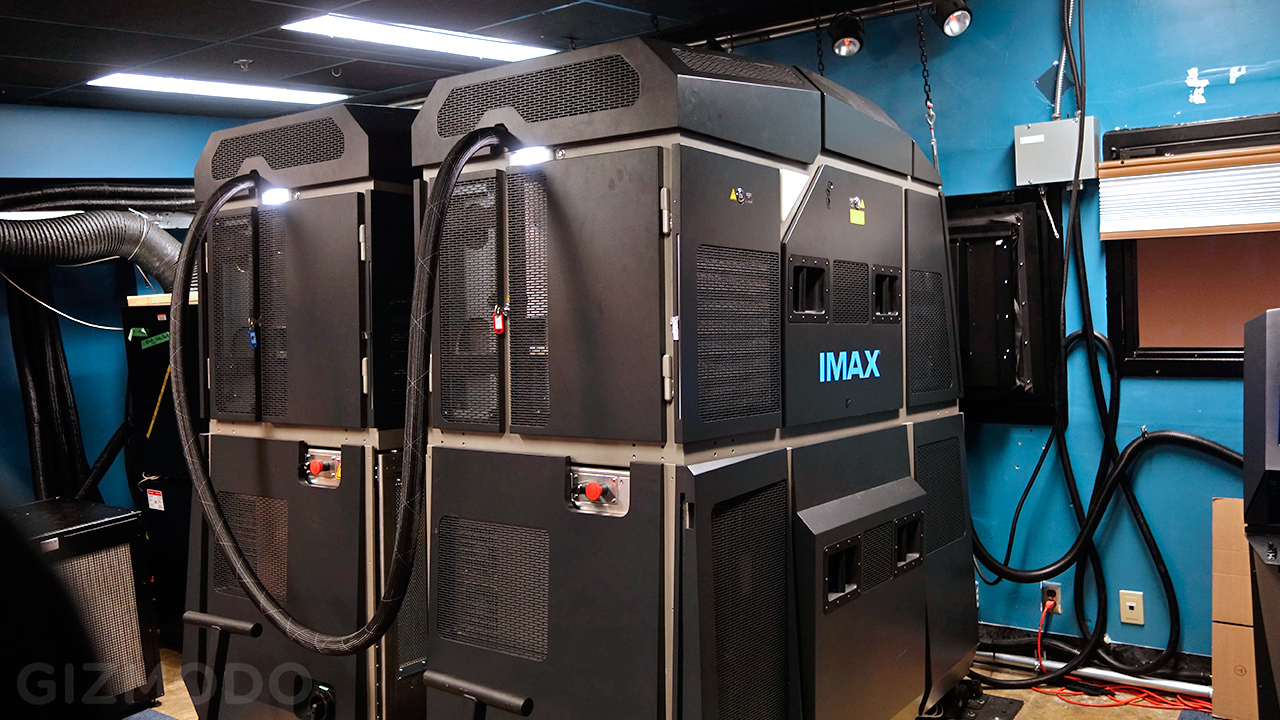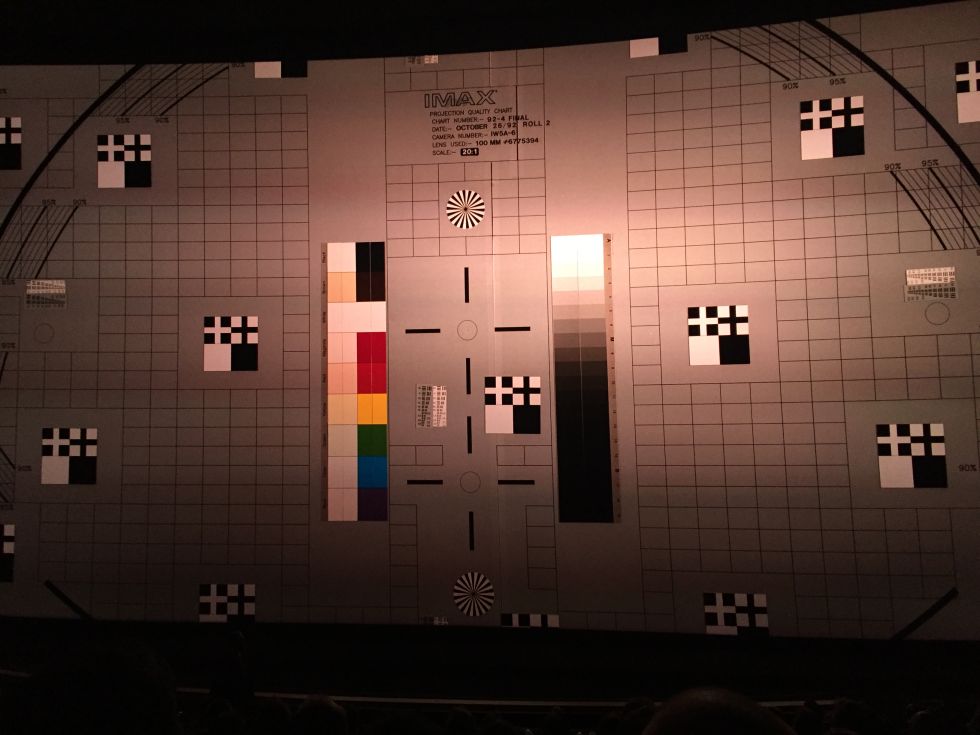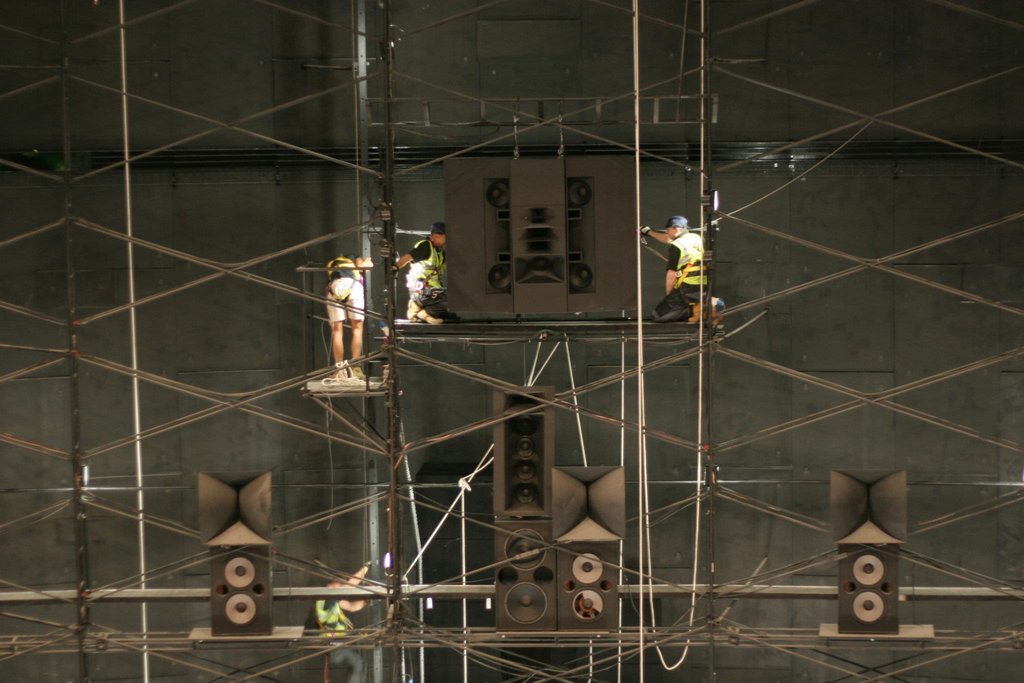The best movie experience is now even better with IMAX's new Laser 4K Projector!

TELUS World of Science – Edmonton is excited to be the first theatre in Western Canada to have IMAX’s newest laser 4K projector installed.
IMAX with laser represents a quantum leap in cinema technology – providing audiences with the sharpest, brightest, clearest and most vivid digital images ever, combined with a whole new level of immersive audio.
The new IMAX laser system, which is only in a handful of theatres across North America, is the most advanced cinema technology and a re-imagination of the movie-going experience.
The dual 4K laser projection system features a new optical engine capable of projecting an image with up to 1.43:1 aspect ratio with maximum resolution and sharpness, unparalleled 2D and 3D brightness, industry-leading contrast and an expanded color gamut that will allow filmmakers to present more vivid and exotic colors than ever before.
The next-generation sound system delivers greater power and precision for ultimate audio immersion. The new system has been upgraded to 12 discrete channels plus sub-bass and includes additional side channels and new overhead channels that will improve the system’s ability to position sounds around the audience.
What is laser projection you ask? It’s only the biggest advancement in IMAX history ever. After years of research, development and a significant investment ($60 million at last count), IMAX Corporation introduced 4K laser projection, a quantum leap in cinema technology.
Think of IMAX Laser as a re-imagination of the movie-going experience, the new dual 4K laser-driven system (2D & 3D capable) is some 60% brighter in output than existing systems and features a significantly larger colour range, as well as the capacity to project at an aspect ratio that fills your field of vision (height of the image depending on the aspect ratio chosen by the filmmaker).

Simply put, what all of this means is, that when you attend a film at IMAX Victoria, you are going to have a movie-going experience like no other. An experience designed to transport the viewer to awesome worlds, where senses and emotions are engaged by the sharpest, brightest, clearest and most vivid images accompanied by a whole new level of immersive audio.
The sound system for IMAX with Laser includes 6 additional channels with a sub-bass for a total of 12 channels of sound. Speakers will be installed in the ceiling, as well as additional sidewalls for even more enveloping sound.
From the image, to sound, to comfort IMAX Victoria also plans to install a new seating package to be introduced to the new technology.
IMAX Victoria will be the first in BC to showcase this advanced cinema technology and we look forward to wowing you with an experience you won’t soon forget!

BRIGHTNESS: A laser light source provides substantially more brightness than a xenon bulb, and will allow IMAX to fill its largest screens with even sharper and more lifelike images. This is significant for 3D because 3D glasses dim the image. With IMAX’s laser, audiences are going to be able to experience full brightness in 2D and 3D.
CONTRAST: Contrast is the difference between the whitest white and the blackest black. Filmmakers love it, but it’s been a problem with existing digital projection systems. IMAX has always delivered the greatest contrast but now with laser IMAX is going to reach contrast levels substantially higher than ever before. Getting more contrast means more detail in the image and a heightened level of realism that makes you forget you are watching a movie.
COLOR: IMAX with a laser will allow filmmakers to explore and expand their use of colors. This means a wider gamut of colors, and a more vivid, more lifelike image. Audiences will get to experience colors that exist in the real world but could never before be shown onscreen.
SOUND: IMAX’s next-generation sound system delivers even greater power and precision. The new system has been upgraded to 12 discrete channels plus a seriously beefy sub-bass. We’ve built on our existing system by adding new loudspeakers on the ceiling above the audience, as well as additional ones on the side. Whether you’re hearing a pin drop or feeling the heart-palpating force of a volcano or a rock concert or a thunderstorm – you’re going to have a new kind of visceral sound experience.

Given all these factors, how do IMAX maintain their quality control?
We have a very involved training programme for operators, both internet training, and on-site training when we do installations but more importantly than that, when we used film-based projectors the projectionist were really experts at their craft, it really was a specific skill set. With digital projectors today you fundamentally push a start button and the human element has been removed and they train high-school students to run them. Recognising that fact, by using the industrial camera at the rear of the theatre we’re setting it up every single day. There's an auto-focus lens rather than requiring a projectionist to do it properly, which should involve the use a pair of binoculars to check the focus and you only have to be out a tiny bit and you’ve lost that very important sharpness. So our decision was let’s not rely on that person, let’s use this camera which can zoom in at extreme accuracy whilst control the lens focus. So every morning when the system powers up we will adjust focus.

We will also adjust the brightness of both projectors because one of the biggest problems with xenon lamps is their brightness degrading, they don’t hold their brightness. We designed our system so that the lamps would maintain this 60% higher brightness over other systems for the life of the lamp. So as the lamp gets to about 90% usage, the screen that the operator uses comes up with a message that says ‘change your lamp’, at 95% our Network Operations Centre gets a message from the projector informing them that the bulb hasn’t been changed and we will call the client and tell them to change the lamp. Normally that takes care of it but I’ve had the very odd occasion where it gets elevated to me and I’ll authorize one of our guys to go out and change the lamp at our cost and we’ll worry about who is paying later on.

So it’s all this automation that we’ve put in where the feedback system is a closed loop, it’s not just some piece of equipment telling the operator that the brightness is falling, it actually makes the adjustment in the projector and if it can’t do it then we get involved. So we’ve pulled the human element out of it, but it’s a good question because it’s a critical part of the movie. If you come in right after I’ve tuned it, you get a great image but what about if you come in a month from now? Our reputation is on the line so this is something we implemented three years ago, I still consider it in its infancy but we want to get to the point where our system is preventing problems rather than reacting to them. 92% of all field problems are resolved through our NOC either on the phone with the client or via one of our guys logging in remotely and changing parameters.
How is the new IMAX sound system superior to a competing immersive audio format like Dolby Atmos?

Dolby Atmos, DTS:X, and Auro-3D or whatever Barco end up calling their system, are all really good systems when compared to what they used to have in terms of emanating a sound from a specific location within the theatre but to be blunt that’s where it stops. So for their systems, they go into a multiplex and they don’t know how the room has been acoustically treated, which is important because the room has just as much impact on the sound as the equipment and the initial recording. So they don’t have control over that, in addition, the cinema chain is buying its speakers, amplifiers and other components from different suppliers and they’re generic off-the-shelf, so they can only be optimized so much. The other problem with the object-orientated system is that every theatre may have a different number of loudspeakers and so they very smartly designed their systems where they’ll mix the objects to handle up to 64 channels to support these objects but recognizing that one theatre might have 12 speakers throughout and one might have 64. So the decoder in the theatre has to figure out how it's going to break those objects up. So in a sense, it’s making creative decisions, although it isn’t actually being creative, it’s just doing the maths but it’s redistributing objects which are differentiating one theatre sound from another.

However in our case because we use this technology called PPS - Proportional Point Source - sound meaning every speaker is a custom design, we can create what is called a phantom sound image to make a sound emanate from between two or three loudspeakers triangulated, whereas theirs can’t, which is why we have always used discrete channels. So the benefit of that is that with 12 channels we can emanate a sound from anywhere in the theatre. The other important area that nobody else has figured out and gotten on to is managing the theatres and the reverberations in the theatre, the equipment that you’re installing and the tuning of it. If you put 64 speakers in a theatre a layperson will go that must be fantastic but if you think about how you tune all of this and how you make every loudspeaker sound identical to all the others - it isn't that easy. So that if a sound is moving around, how do you make sure that every speaker is playing it back with the same cadence and tonality. If there is a slight variation your ears are very susceptible to picking that up. So we’ve spent a great deal of money on the tuning. We’re using a computer to equalize tens of thousands of points when we tune a room, so we’re addressing every single component. They have a better system in conventional theatres than ever before, so hats off to them, but the rest of the equation they haven’t yet tackled.
